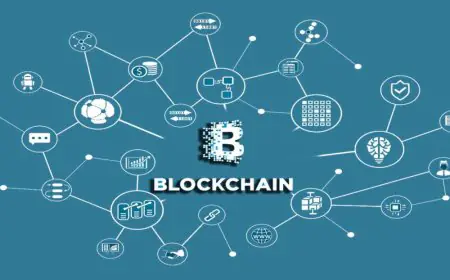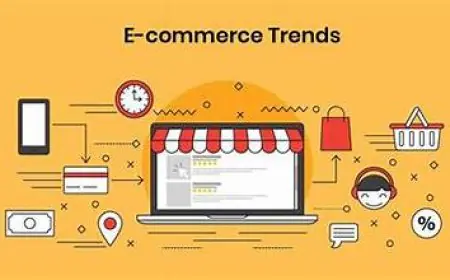What is the basic understanding of cloud computing?
In this article we will discuss about What is the basic understanding of cloud computing and What Is Cloud Computing?

What is the basic understanding of cloud computing?
At a basic level, cloud computing refers to the delivery of computing resources and services over the internet. Instead of owning and managing physical servers and infrastructure, users can access and utilize computing resources, such as servers, storage, databases, software, and networking, from a cloud service provider on a pay-as-you-go basis. Here are the key concepts to understand in cloud computing:
1. On-Demand Services: Cloud computing provides on-demand access to computing resources, allowing users to quickly provision and scale resources as needed. This flexibility is particularly beneficial for businesses with fluctuating workloads.
2. Resource Pooling: Cloud service providers pool and share resources across multiple customers. This means that resources are dynamically allocated and shared among users, optimizing resource utilization and efficiency.
3. Scalability: Cloud services are highly scalable, allowing users to scale up or down based on their requirements. This ensures that businesses can adapt to changing demands without overprovisioning or overspending.
4. Service Models: Cloud computing offers different service models: Infrastructure as a Service (IaaS), Platform as a Service (PaaS), and Software as a Service (SaaS). Each model provides varying levels of control and management over the computing environment.
5. Deployment Models: Cloud computing offers different deployment models: Public Cloud, Private Cloud, Hybrid Cloud, and Multi-Cloud. Organizations can choose the deployment model that best suits their specific needs and security requirements.
6. Cost Efficiency: Cloud computing operates on a pay-as-you-go or subscription-based model, reducing upfront infrastructure costs. Users only pay for the resources they use, making it cost-effective, especially for startups and small businesses.
7. Reliability and Redundancy: Cloud service providers typically have redundant data centers and disaster recovery measures in place, ensuring high availability and data resilience.
8. Security: Cloud providers implement robust security measures to protect data and infrastructure. However, users must also take responsibility for securing their applications and data in the cloud.
9. Accessibility: Cloud services can be accessed from anywhere with an internet connection, enabling remote work and collaboration.
10. Examples of Cloud Services: Popular cloud services include cloud storage (e.g., Dropbox, Google Drive), software applications (e.g., Microsoft Office 365), virtual machines, and databases.
Overall, Best Online Cloud Computing Course in Chandigarh It offers flexibility, scalability, cost efficiency, and accessibility, making it a powerful solution for individuals, businesses, and organizations to leverage computing resources and services without the burden of managing physical infrastructure.
What Is Cloud Computing?
Cloud computing refers to the delivery of computing services over the internet. It allows users to access and use a variety of computing resources, such as servers, storage, databases, software, and networking, through the internet on a pay-as-you-go or subscription-based model. In essence, cloud computing eliminates the need for users to own and manage physical hardware and infrastructure.
The key characteristics of cloud computing are as follows:
1. On-Demand Self-Service: Users can provision and manage computing resources without the need for human intervention from the service provider. This allows for instant access to resources as needed.
2. Broad Network Access: Cloud services are accessible over the internet from various devices, including desktop computers, laptops, smartphones, and tablets.
3. Resource Pooling: Cloud providers use multi-tenant models, meaning that computing resources are shared and dynamically allocated among multiple users. This pooling ensures efficient resource utilization and cost savings.
4. Rapid Elasticity: Cloud resources can be scaled up or down quickly and easily, allowing users to adapt to changing demands and workload fluctuations.
5. Measured Service: Cloud computing services are metered, and users are charged based on their actual usage. This pay-as-you-go model enables cost optimization and flexibility.
Cloud computing offers different service models:
1. Infrastructure as a Service (IaaS): Provides virtualized computing resources over the internet, such as virtual machines, storage, and networking.
2. Platform as a Service (PaaS): Offers a platform that allows users to develop, run, and manage applications without the complexity of infrastructure management.
3. Software as a Service (SaaS): Delivers software applications over the internet on a subscription basis. Users access the software through web browsers, eliminating the need for local installations.
Cloud computing also has different deployment models:
1. Public Cloud: Services are provided by third-party cloud service providers over the internet to multiple customers.
2. Private Cloud: Cloud infrastructure is solely dedicated to a single organization and is typically managed on-premises or by a private provider.
3. Hybrid Cloud: Combines elements of both public and private clouds, allowing data and applications to be shared between them.
4. Multi-Cloud: Involves using multiple cloud service providers to meet specific business needs and avoid vendor lock-in.
Cloud computing has revolutionized the IT industry by offering cost-effective, scalable, and flexible solutions for businesses and individuals, enabling them to focus on their core activities without the burden of managing physical infrastructure.
If you required any then visit our website:-Online Cloud Computing Course in Chandigarh
Read more articles please visit :- Currisine
What's Your Reaction?
































































































